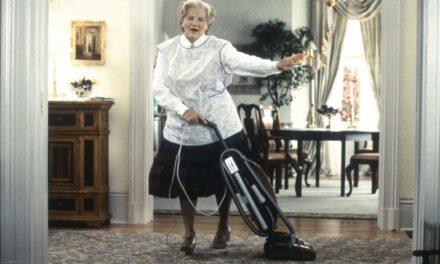 By Dr. Julie Alonso, WCI Columnist
By Dr. Julie Alonso, WCI Columnist
For a short period of time in my marriage, my non-medical husband made more money than me. This was when I was in medical school with $0 income (or, really, a negative income since I was accruing loans) and during the first few years of residency. Once I got to fellowship, the roles started to reverse from the traditional gender-based norms, and I became the primary earner in the relationship. This setup has had both its benefits and drawbacks, along with some strong feelings that it elicits from me, my husband, and others in our lives. Our income gap has widened and shrunk at various times, but it has persisted through our years together.
For female physicians, this arrangement is likely becoming more common as we now make up the majority of doctors coming down the pipeline—which, of course, comes along with being high earners. According to the AAMC:
“The 2017-2018 school year was the first time the matriculating class of medical schools was over half women, and 2019 brought the first year where women made up greater than 50% of all medical students (50.5% to be exact).”
It reminds me of the T-shirts that say, “I became the doctor that my parents wanted me to marry.”
How does one define “primary earner” in a relationship? If you make roughly the same amount within a certain range, this term would not apply. Generally speaking, the primary earner makes at least 60% of the income and a sole earner makes 100% (obviously). If both earners in the relationship make between 41%-59% of the income, this would be labeled as “egalitarian.”
Apparently, I fall into a category of ~10% of opposite-gender married women who are the primary earners. This figure may be misleading for doctors—among wives who earn $100,000 or more, 43% are the primary earner in the marriage—but I’ve typically made between 75%-85% of our income through various time periods. I solidly fall into the primary earner territory.
I wondered how much more common my situation was becoming.
Being the High Earner as a Woman
According to a recent Pew Research Study, the percentage of households of opposite-gender marriages with the husband as the primary or sole earner has been gradually decreasing during the past 50 years (1972-2022)—from a whopping 85% to the current figure of 55% (it’s noteworthy that it is still the majority of relationships). The next most common category was egalitarian in 29% of relationships. The least common category was the wife being the sole or primary breadwinner at 16% (10% primary and 6% sole), although it’s still slightly more than triple the figure of 5% in 1972.
My husband and some of his friends have joked that he is “living the dream” of “marrying a doctor,” which made me feel empowered but also kind of irritated. But at least I have the security of knowing that he did not pick me because of my income. When we met, we were still in high school, although—full disclosure—I did tell him that I wanted to become a doctor. Who knows, maybe he was the only 17-year-old boy more focused on the income potential of his future wife than on football games, homecoming, and final exams.
I have a lot of friends who married other doctors, and I have even daydreamed about having a second physician salary in the family. But while dual-physician marriages are common, they are still the minority of medical marriages. Per a Medscape survey, 25% of women physicians are married to doctors, while 16% of male physicians are married to doctors. A large portion of dual-physician couples who work full-time likely fall into the egalitarian income category, unless they are in very discrepant fields with respect to salary (i.e., a pediatrician married to a plastic surgeon). While some non-medical spouses are also high earners, many are not.
How does this affect the relationship emotionally and physically?
There seems to be a sweet spot. Interestingly, data from the Panel Study of Income Dynamics 2001-2015 showed that psychological distress for men was at its lowest when the wife made ~40% of the income. Presumably, the husband had the knowledge that he made more but with the security that there was still another income stream and that supporting the household financially did not rest squarely on his shoulders. The husband’s psychological discomfort increased incrementally as the wife earned more of the income and peaked when the men were completely dependent on the income of their wives.
It still goes to show that men who do not financially support the household, whether by choice or otherwise, may feel emasculated or upset by their own or societal expectations.
This effect was not seen when the reverse circumstances were present. In other words, when the wife’s relative income was smaller than 40%, the husband did not feel the same level of distress even in the face of increased financial responsibility. Again, it seems that traditional gender expectations are playing a big role here.
Of course, there is some stress to being the solo or primary earner regardless since there is less of a buffer if I lost my job or could not work. I know that I’ve felt the pressure on me to support my family, which my husband has not had to confront. I’ve been the primary one funding our savings, retirement, college funds, investments, etc., and that can sometimes feel unfair. I guess I’m not immune to the influences of traditional gender roles either. When I switched jobs about five years ago, I made sure that I had another job with health insurance benefits lined up. I did not have the luxury of taking time off to re-group.
One other piece that I found relevant was that the connection between the husband’s psychological discomfort and the wife’s portion of the income was not found in relationships where the wife was the higher earner at the beginning of the marriage. This highlights the role of marital selection and expectations. If the wife is the higher earner at the outset, the situation is already known and accepted. It may be self-selecting for men who feel more comfortable in these types of relationships and feel less threatened by a spouse who earns more than them. Considering that my spouse and I were married before I was a doctor, we would fall into this category. He has never seemed bothered by my higher income (and certainly has not complained about our nice house, travel, and financial security, either).
What factors influence whether the woman is more likely to be the primary or sole earner? The obvious one is the level of education. The higher the woman’s formal education, the more likely she is to out-earn her husband. This trend will likely continue as more women are pursuing higher education than ever before. There are racial and ethnic differences, too. Black women were much more likely to be the higher earner in their marriages (26%). Hispanic women were less likely to be the primary breadwinners. Wives without children were more likely to be the primary earner than those with children (20% vs. 15%).

Overall, dual-income couples of all types tended to have a much higher income than sole-provider marriages, which is also not surprising. There is not as much research out there on income discrepancies within same-gender couples. Recent US Census data shows that same-gender married couples have a higher median income than opposite-gender married couples. But this skewed higher in male relationships, while female relationships were on par with opposite-gender marriages when all ages were included. However, these studies did not address the question of one partner being a significantly higher earner over the other.
More information here:
You Should Invest Like a 50-Year-Old Woman
Women and Money: Myths That Hold Us Back
What to Know If You’re the Female High Earner
If you are in a scenario where you, as the woman, are the primary or sole earner, here are several things to consider (many of these apply to the opposite scenario as well).
Setting Expectations
When I started moonlighting in residency to earn extra money, my husband agreed to pick up more of the housework, like cleaning and household errands. We both agreed that this was a sound financial decision since I could earn a lot more working moonlighting shifts in the ED and urgent care than he could by picking up a part-time job. The most important thing was we had this conversation up front, set reasonable expectations that we both agreed to, and both felt that we contributed input. Having a division of labor among the household tasks that is accepted as fair and highlights each person’s strengths is helpful.
Financial Decision-Making
Even if one partner earns less, it is still important that both partners have a role in financial input and decisions. The lower earner is still hopefully contributing to the household, and they likely want their thoughts and opinions considered. Financial decisions should be agreed upon and ideally made in a balanced way. Of course, one partner may take more of the reins of managing the finances because they have more time, interest, or knowledge than the other, but significant financial decisions should still be made together. If one partner prefers to defer to the other, that may work for some relationships, but those parameters should be set beforehand. In my household, I’ve always had more inclination toward math and numbers and enjoyed learning about financial topics. I tended to be the one paying the bills, observing our accounts, and monitoring our savings goals. Again, this went against traditional gender roles, but it worked better for us.
Red Flags
There are some red flags to watch out for in scenarios with significant income discrepancies. If one spouse seems uncomfortable, distressed, or unsupportive of the other spouse earning a higher income, this needs to be addressed. If the lower-earning spouse chooses not to work but fails to do anything else to support the household, this would also raise concerns. I would not have accepted this in my relationship. Even though I am the primary earner, my husband still works hard at his job and for our family.
Asset Protection
Particularly if there is a big discrepancy in income or pre-marital assets, it makes sense to protect your financial well-being with a prenuptial agreement. If neither of you has any significant assets or income discrepancy starting out, this may not make sense. My husband and I fell into the latter category. Even if you do not have many concrete assets starting out, having open, honest conversations about financial goals and philosophies is another way of protecting one’s future assets. We bought a book of financial questions for couples that we worked through when we were engaged which helped establish a shared foundation.
More information here:
How to Get What You Deserve as a High-Earning Woman
Unique Challenges for Female High-Income Professionals
Why are we even talking about this in 2023? Can women make more than their spouses without it being noteworthy? Some readers may think this article is unnecessary (although I’d be questioning why you read it to this point then). Would this even be a topic to discuss if the usual societal expectations were met? Probably not.
As we’ve noted, opposite-gender marriages still tend to fall along traditional lines of the man being the primary earner, but these trends are slowly changing with more rapid progress in women with higher education and income levels. There are strains and emotions that may affect marriages that challenge gender norms, and a growing number of female physicians fall into this category. I’ve encountered many of these and have had to process them in the context of my situation.
My hope is that we will get to a point as a society where this whole conversation is moot because income distribution between spouses will fall along an equitable curve, regardless of gender.
What do you think? If you’re the high earner as a female, how does that make you feel? Are you empowered, or are you affected by the idea of traditional gender roles? In what other ways should we be talking about this topic? Comment below!








